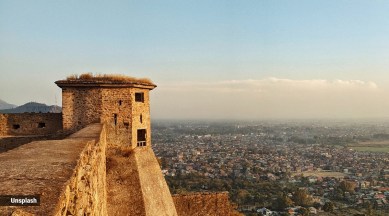📣 For more lifestyle news, click here to join our WhatsApp Channel and also follow us on Instagram
On World Heritage Day, a look at India’s top Heritage Sites
Approved by UNESCO in 1983 during its 22nd General Conference, the day is dedicated to recognising sites of historical importance, raising awareness and the stressing on the need to restore and preserve them.

The International Council on Monuments and Sites (ICOMOS) in 1982 took a decision to celebrate April 18 as the International Day for Monuments and Sites, popularly known as World Heritage Day. Approved by UNESCO in 1983 during its 22nd General Conference, the day is dedicated to recognising sites of historical importance, raising awareness regarding them, and stressing the need to restore and preserve them.
The day, thus, promotes cultural importance, while also highlighting the many impediments to doing so.
monthly limit of free stories.
with an Express account.
Every year, a theme is proposed for the day which guides the celebrations and the many activities that ICOMOS National and International Scientific Committees and other bodies do.
The theme for this year is “Heritage Changes.” This theme is aimed at addressing issues of climate action and its relation to cultural heritage. It also emphasizes the role of cultural heritage in supporting the protection of vulnerable communities in climate action and responding to the UN Decade of Action.
At the moment, India is home to 40 UNESCO World Heritage Sites. Out of these, 32 are cultural, 7 are natural, and one, the Khangchendzonga National Park, is of mixed type. India has the sixth-largest number of sites in the world.
Here is a look at a few heritage sites in India:
Ajanta Caves
The caves at Ajanta represent a collection of Buddhist art from two periods. The earliest monuments date to the second and first centuries BC and were created by the followers of Theravada Buddhism. Later on, monuments were added in the fifth and sixth centuries AD during the Vakataka dynasty.
Agra Fort
Agra Fort is a 16th-century Mughal imperial fortress. It got its present layout under the Mughal emperor Akbar. The fort houses audience halls and two mosques, apart from courtrooms and other structures.
Taj Mahal
Taj Mahal is the finest example of the Indo-Islamic architecture. It was built in Agra on the bank of the Yamuna river as a mausoleum of Mumtaz Mahal, the Persian wife of the Mughal emperor Shah Jahan, between 1631 and 1648.
Konark Sun Temple
The temple was built in the 13th century and is one of the finest examples of the Kalinga style of architecture. It represents the chariot of the solar deity Surya. The temple has 24 wheels, carved of stone and richly decorated, and it is pulled by six horses.
Kaziranga National Park
Kaziranga is located in the floodplains of the Brahmaputra River. It is home to world’s largest population of the Indian rhinoceros, as well as tiger, Asian elephant, wild water buffalo and the Ganges river dolphin, among several other indigenous species.
📣 For more lifestyle news, follow us on Instagram | Twitter | Facebook and don’t miss out on the latest updates!
📣 For more lifestyle news, click here to join our WhatsApp Channel and also follow us on Instagram